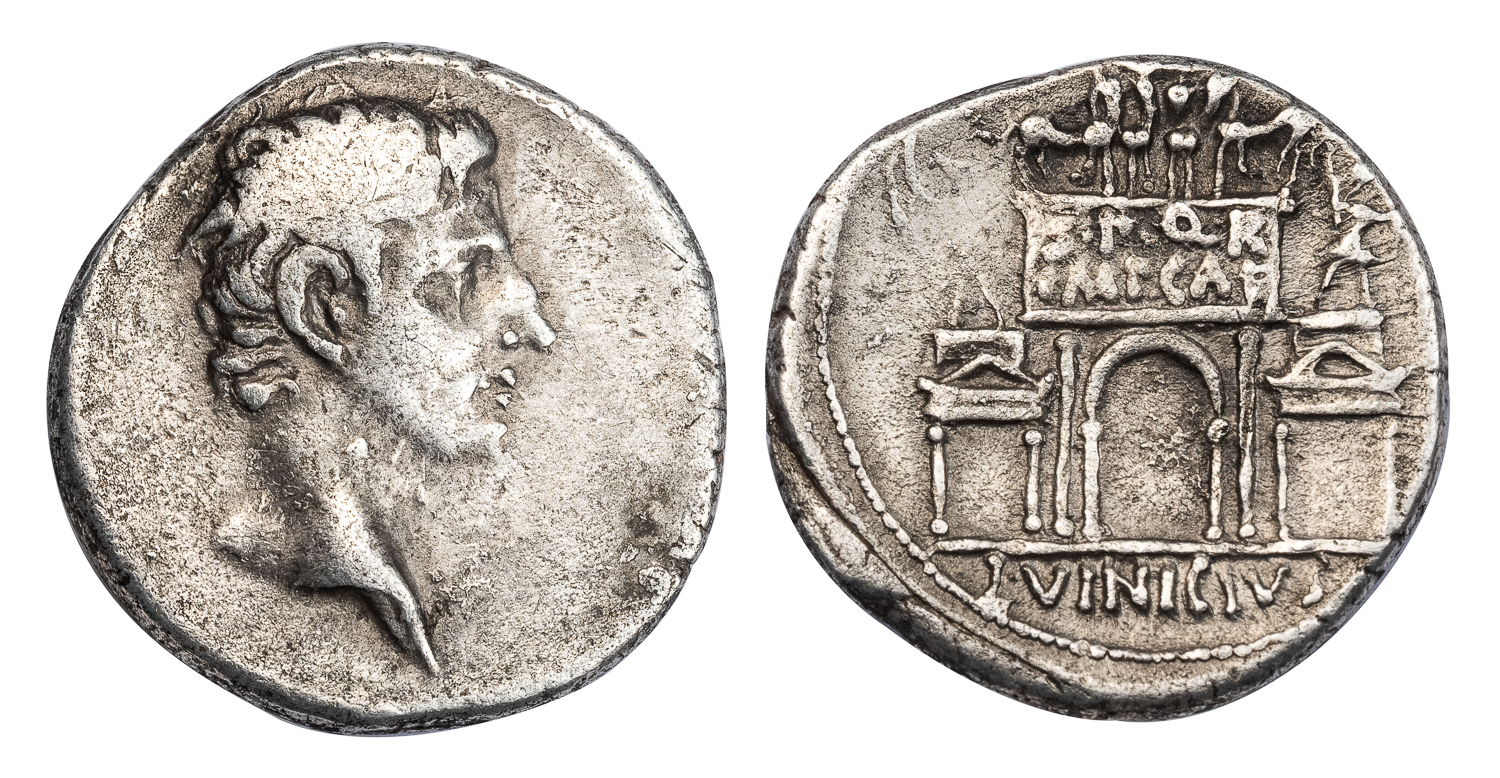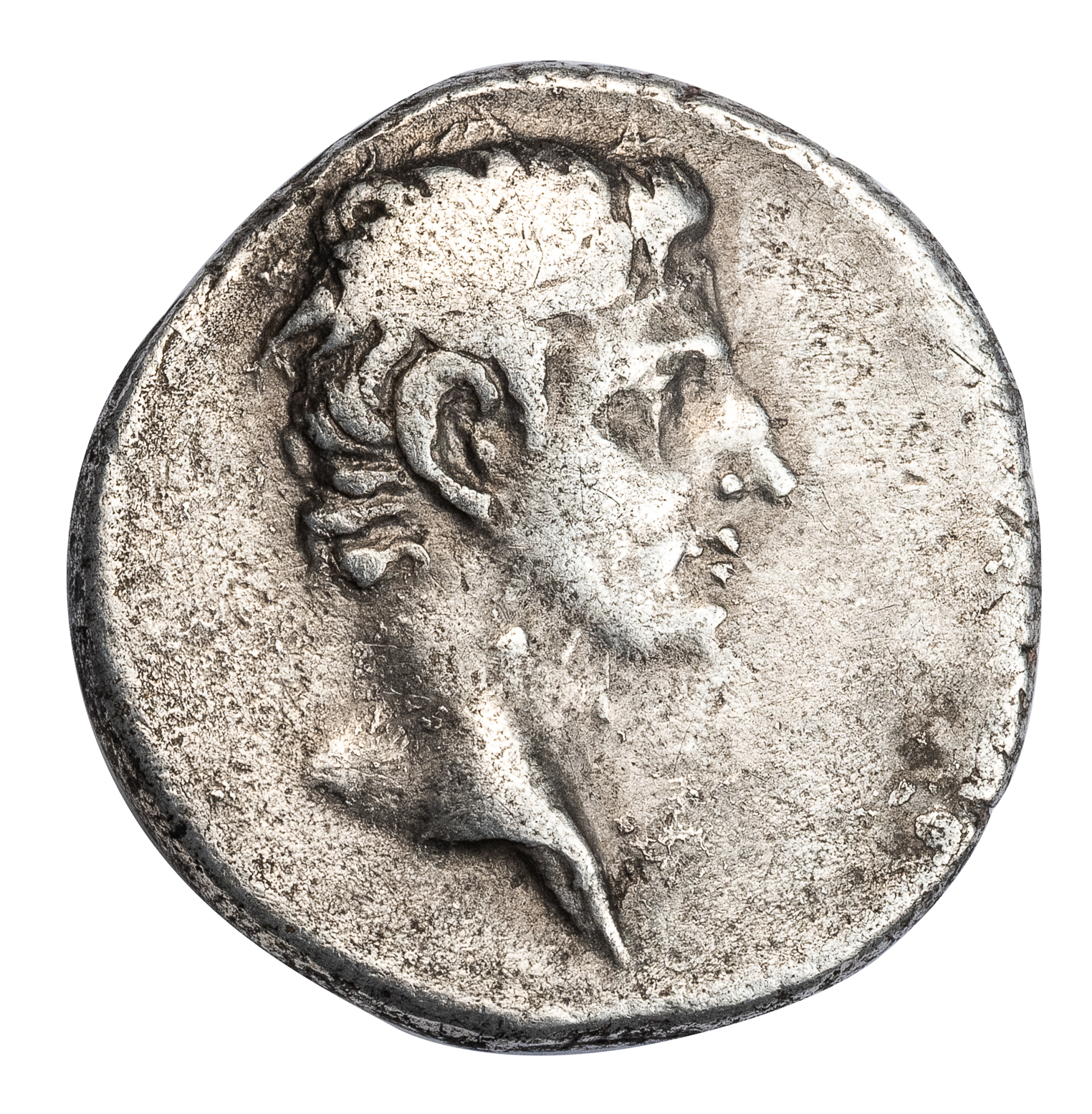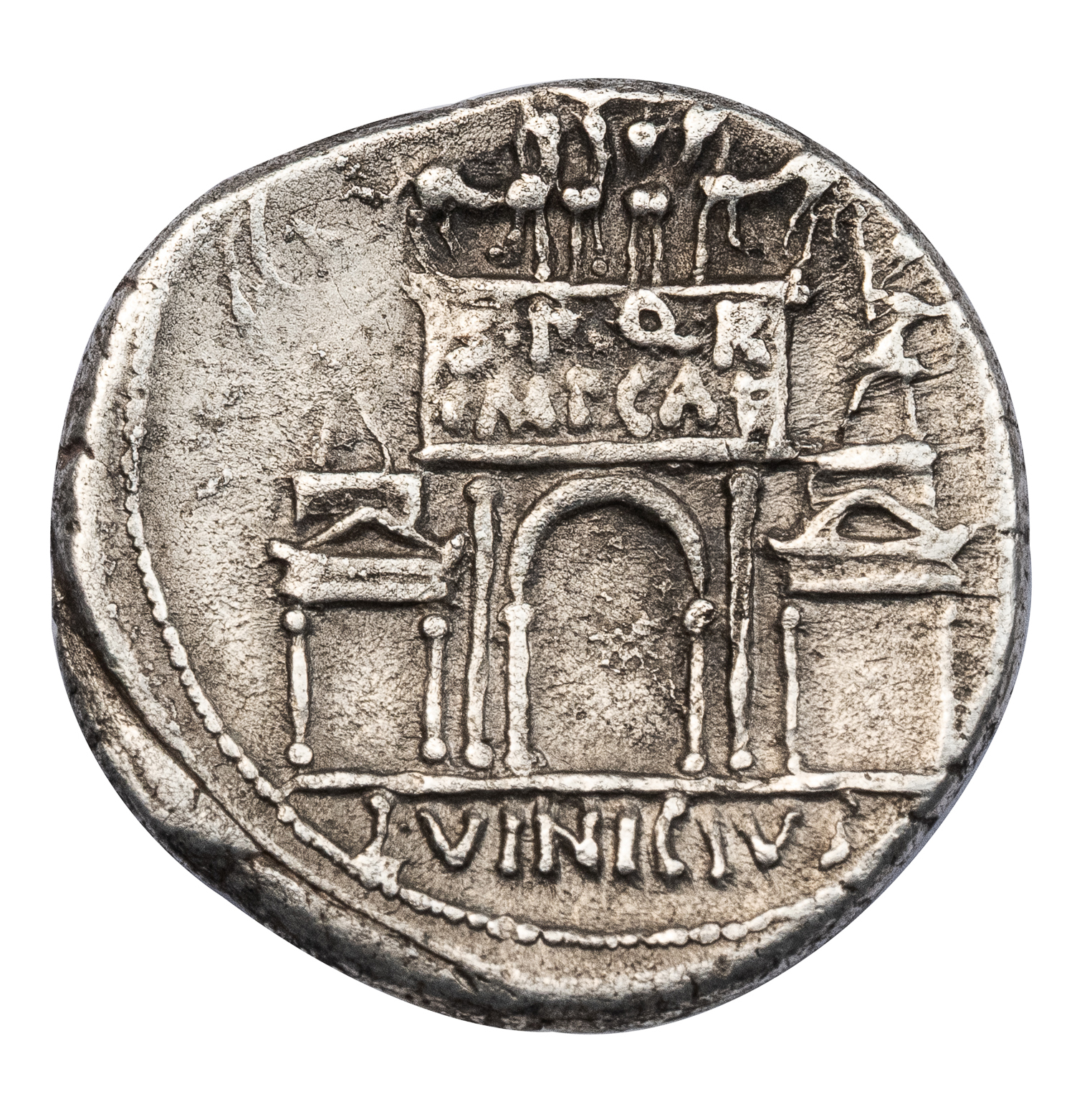AUGUSTUS SILVER DENARIUS – PARTHIAN ARCH ISSUE OF 16 BC – VF ROMAN IMPERIAL COIN OF THE 12 CAESARS (Inv. 20380)
$1,400.00
20380. ROMAN EMPIRE. AUGUSTUS, 27 BC–AD 14.
Silver Denarius, 3.80 g, 18 mm. Issue of Rome, struck 16 BC by moneyer L. Vinicius.
Obv. Bare head of Augustus right. Rev. Triumphal arch with inscription S P Q R / IMP CAE on the attic, with imperial quadriga on top and other statuary below, L VINICIVS in exergue.
RIC I rev, 359; Elkins Monuments, fig 57.
VF, light toning.
The triumphal arch on the reverse of this denarius celebrates Augustus’ diplomatic victory in 20 BC that saw the return of military standards previously captured by the Parthians during the failed campaigns of Marcus Crassus and Mark Antony. This Parthian Arch is actually an arch originally erected in the Roman Forum to celebrate the emperor’s victory over Antony and Cleopatra at the Battle of Actium (31 BC), but which was subsequently repurposed for the Parthian triumph through the addition of two smaller side arches. The central arch displays a statue of Augustus in a triumphal chariot, while the side arches are topped by statues of a Parthian archer and slinger. The new Parthian Arch was important as it visually presented a diplomatic success in terms of a military victory. The latter was far more glorious than the former from the Roman perspective. Perhaps even more important than this repackaging of the returned standards, the Parthian Arch allowed Augustus to essentially erase the Actian Arch, which was counterproductive to his self-characterization as the restorer of peace, prosperity, and moral customs to Rome. As the original Actian Arch, the monument essentially celebrated a victory in a Roman Civil War against Antony, even though it was manipulated to appear as a victory over the Ptolemaic queen Cleopatra. Now, this Civil War victory, so inappropriate for memorialization, was replaced with one showing triumph over a well-established foreign enemy.



